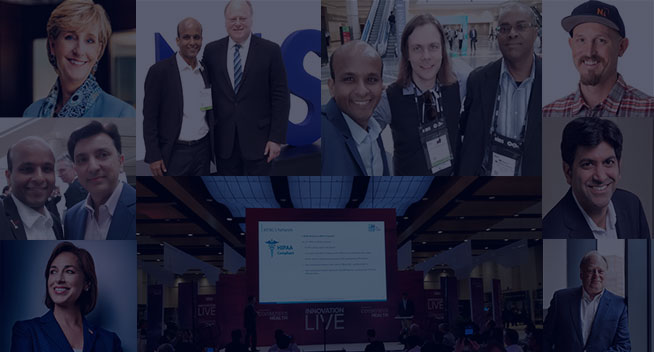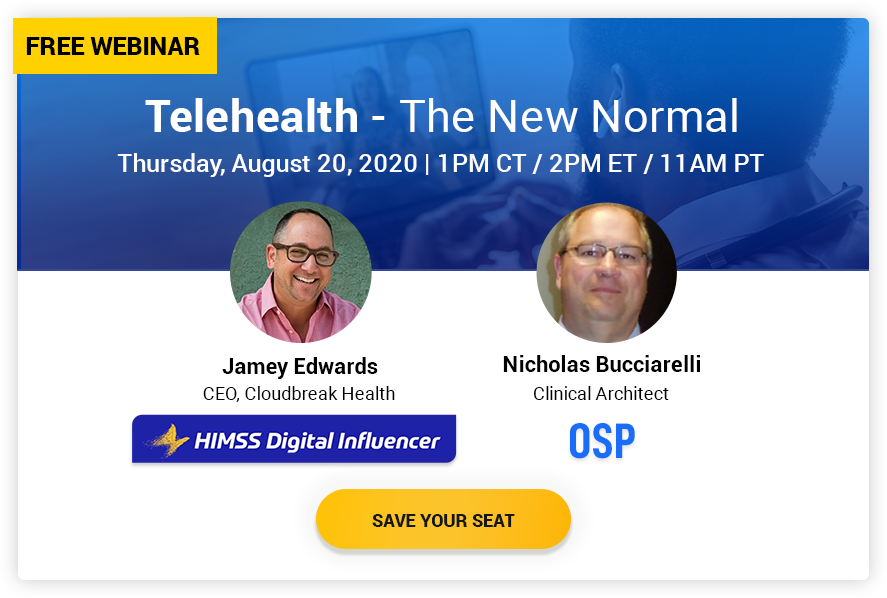More than 43,000 health IT professionals gathered in the mammoth Orange County Convention Center, Orlando to showcase healthcare innovations, and discuss pressing issues of the industry. The action-packed floor included ground-breaking software solutions, and a myriad of informative sessions offered by few of the best minds in healthcare today.
OSP was excited to attend the HIMSS Global Conference & Exhibition. In addition to our insightful conversations with attendees, and exhibitors, we had keen observations to gain a deeper understanding of the latest issues in health information, and technology. Here are OSP’s top seven takeaways from HIMSS19.
1. Interoperability Took The Center Stage At HIMSS 2019
The healthcare industry has made tremendous efforts at adopting EHRs, but the technology is still complicated for providers to use, and interoperability poses a more significant challenge. In the future, healthcare needs a renewed focus on promoting interoperability among healthcare providers especially with the new announcements by ONC, and CMS Administrator Seema Verma added, “The industry was not doing what was important, what is needed for patients, and the healthcare system. Instead, the government had to step in.”
Emerging technologies like Distributed Ledger Technology (DLT), AI or Blockchain should be leveraged to improve the interoperability, and to remove the redundancy, and friction points that currently exist within the systems. The higher visibility to patients complete care history will be a powerful step towards higher quality care, and improved outcomes.
2. Consumer Tech Solutions: Giving People What They Want
The buzzwords like patient empowerment, consumer-centric healthcare, and price transparency were zooming around at HIMSS19. Private healthcare technology players expressed their desire to enable patients to play a vital role in their health management, and care experience.
“We believe empowering patients with this access will help build an ecosystem of applications that can improve both patient care, and population health. Noting that the standardization of APIs, and aggregated health info will reduce the burden on providers too.” – HHS Secretary Alex Azar in his HIMSS TV keynote address.
The traditional healthcare organizations are in reactive mode. As per our observations, the shift towards value-based care, rising costs, health system consolidation, regulatory pressures approaching silver tsunami are the major challenges. Today’s digital health tools are ever expanding, and consumer-driven focusing on fundamentally disrupting business models.
3. Value-based Care Is Here To Stay
Value-based Care remains the primary goal at HIMSS19. Reaching there seems extremely elusive because the industry is still gauging the problem concept, and trying to understand the possibility of transforming the current healthcare systems. It is a well-accepted fact at HIMSS19 that value-based care only becomes a reality when this view of the patient, the care model, and the risk are better understood.
The modern-day technologies have the potential, and granular understanding to shift patient-centric care models rapidly. In 2019, the top brass of external market disruptors is entering the healthcare space. Companies such as Amazon, Google, and Walmart – will continue to apply their unique understanding of consumer needs, and emerging technologies to meet, and exceed patient demands in ways that the traditional healthcare market still struggles with today.
4. Emerging Tech Is Everywhere, And We Must Learn To Leverage It
Today’s healthcare stakeholders are putting a great emphasis on patient experience created by intuitive emerging technologies like IoTs, AI, Machine Learning, and Blockchain. At HIMSS19, even the bigger healthcare providers were seemingly open to the idea of teaming up with startups, and entrepreneurs to develop modern technology-based systems a faster pace.
HIMSS19 exhibitors introduced new IoT tools, including advanced sensors, and wearables. A considerable number of next-gen cybersecurity products were presented. Boehringer Ingelheim, Kalibrate Blockchain, and IBM Canada all are currently working with blockchain-based technologies to improve, and secure healthcare processes. Health system ‘Sutter health’ unveiled its own AI tech. Partnering with Ada Health for personalized care, Innovaccer debuts a data activation platform. In conclusion, Blockchain has shown the potential for use in cases such as patient identity, claims adjudication, supply chain management, data reconciliation, and more.
5. Patient Data Belongs To Patients
A loud, and clear message from federal healthcare officials at HIMSS19 was, ‘Patient data belongs to patients.’ The Department of HHS announced several proposed rules proposed to improve consumer access to their health data. Hospitals must take permission from EHR vendors to use their data. The recent regulations by the government cleared the idea that patient data doesn’t belong to providers or vendors; it belongs to patients.
By 2020, CMS is demanding that all health plans doing business in Medicaid, Medicare, and through the federal exchanges share claims, and other health data with patients electronically via an API. These regulations will undoubtedly boost the interoperability efforts today, but it will take time to determine whether they lead to the long-held goal of industrywide interoperability.
6. Patient Engagement & Security Is The Most Critical Aspect
Patient experience is at the core of healthcare delivery, and patient engagement is the first step to offer top-notch patient experience. Various IT-enabled tools, and related strategies being applied by healthcare professionals to optimize patient experience. The channels of qualitative improvement for patient experience were discussed, and new ideas were presented at HIMSS.
The current patient engagement capabilities are weak, and insufficiencies around appointment wait times, scheduling, and medical billing are dragging on patient satisfaction. It is driving patients elsewhere, and draining the provider revenue. To retain patients, and keep them from turning to alternative care services, there is a massive need for transformation in the provider’s approach. The healthcare providers must transform their services with an emphasis on access, transparency, and ongoing engagement outside of the provider setup.
7. Cloud Computing Has A Bigger Role In Reshaping Healthcare
Last year, former Google CEO, Eric Schmidt advised HIMSS to “Run to the cloud, don’t walk“. His quote seemed highly welcomed by health IT vendors at HIMSS19. The event floor was buzzing with new partnership announcements, and smart cloud technologies to make it happen. The cloud has taken on new value in healthcare as machine learning, and its massive data storage capacity has begun to move from hype to reality in medical centers. The current transformation of the healthcare system is rapid, and no other area of healthcareis more dynamic than the shift in archiving to cloud vendor-neutral archives.
The cloud technology in healthcare has the potential to make processes faster, cheaper, and much easier to access. The modern-day cloud platforms in healthcare can offer momentum in helping healthcare enterprises to uncover meaningful insights from their data, enhance patient care delivery process workflow, and streamline health management operations. The surge of cloud vendors with smarter shared accountability models can simplify healthcare operations by offering access to technology tools, and solutions such as machine learning, and artificial intelligence.
Final Words
HIMSS19 offered a lot to digest with this roundup of critical observations that grabbed the attention of more than 43,000 health executives, policymakers, and academicians. We believe,
- The industry should lay the groundwork to integrate the multiple healthcare solutions to support value-based health with an increased emphasis on investing in infrastructure to support these initiatives.
- Emerging health technologies will continue their march towards widespread use in the future, displacing traditional healthcare models.
- The healthcare industry is seeking ways to integrate emerging technologies, to extend quality care to their patients for the best health experience.
- Healthcare stakeholders should work together to transform healthcare, and make sure that emerging technologies are readily accessible, equitable, and affordable for all.
- Healthcare stakeholders whom OSP spoke with at HIMSS19 agreed that no matter how advanced technology becomes, the patient should be at the core of every healthcare IT solution.
OSP is a trusted software development company that delivers bespoke solutions as per your business needs. Connect with us to hire the best talents in the industry to build enterprise-grade software.

How can we help?
Fill out the short form below or call us at (888) 846-5382
Looking for software solutions to build your product?
Let's discuss your software solutions for your product in our free development acceleration call!
Get In Touch arrow_forwardDiscuss Your Project Handover with a team of expert Book a free consultation arrow_forward
About Author

Written by Riken Shah linkedin
Riken's work motto is to help healthcare providers use technological advancements to make healthcare easily accessible to all stakeholders, from providers to patients. Under his leadership and guidance, OSP Labs has successfully developed over 600 customized software solutions for 200+ healthcare clients across continents.


















